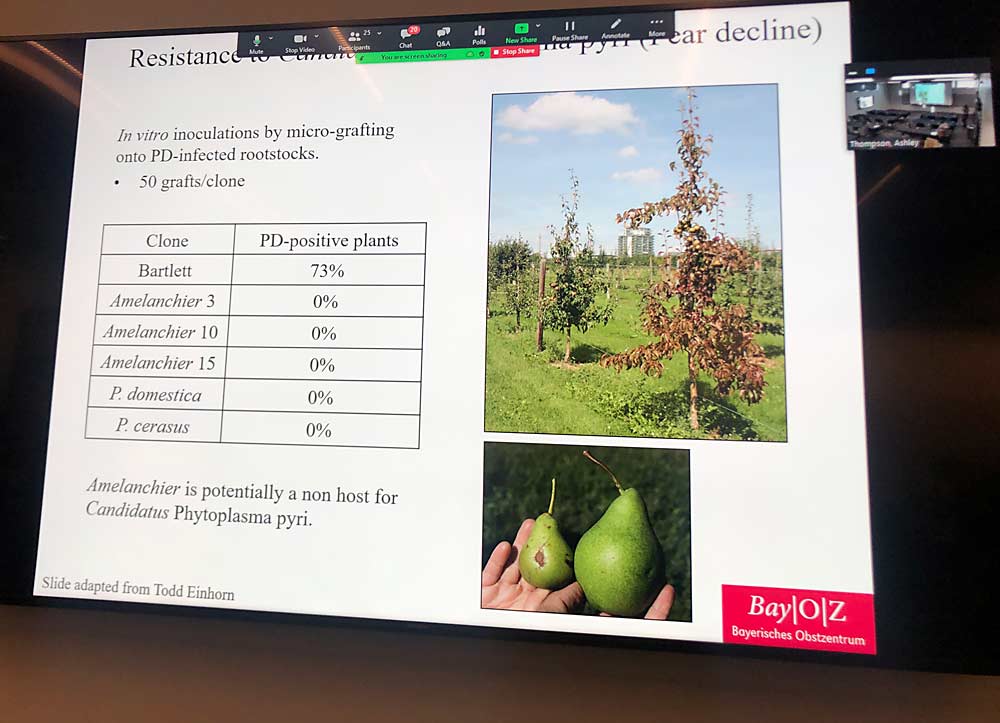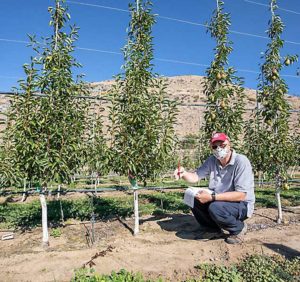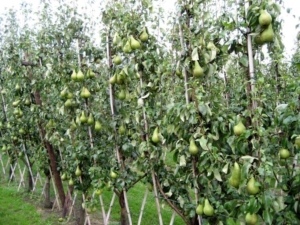
Trials of Amelanchier rootstocks old and new show its promise as a dwarfing solution for pears, which is leading to continued and new studies at Oregon State University.
That’s what Kelsey Galimba, an OSU horticulturist, told growers Feb. 16 at the annual winter horticulture meeting in Hood River.
Amelanchier is a family of shrubby plants, many of them native to North America, that may offer dwarfing, disease-resistant characteristics for pear growers — who for decades have been looking for ways to make their orchards more productive with smaller, two-dimensional trees the way the apple industry has successfully done. Relative to the industry-standard Old Home by Farmingdale 87 root, Amelanchier produces high yields of large fruit on smaller trees and seems to resist pear decline, Galimba said. It also seems to be cold hardy.
However, before the rootstocks can be planted commercially, researchers need to learn how to optimize management with pruning, nutrition and irrigation, Galimba said. The university’s Mid-Columbia Agricultural Research and Extension Center has a history of trials with growing pears on Amelanchier roots, which Galimba has either renewed or is continuing since arriving in late 2020. She also hopes to plant a new trial in 2024.
Other topics at the winter hort meeting, staged by the OSU extension service, included rodent control, codling moth and fire blight.
—by Ross Courtney









Leave A Comment